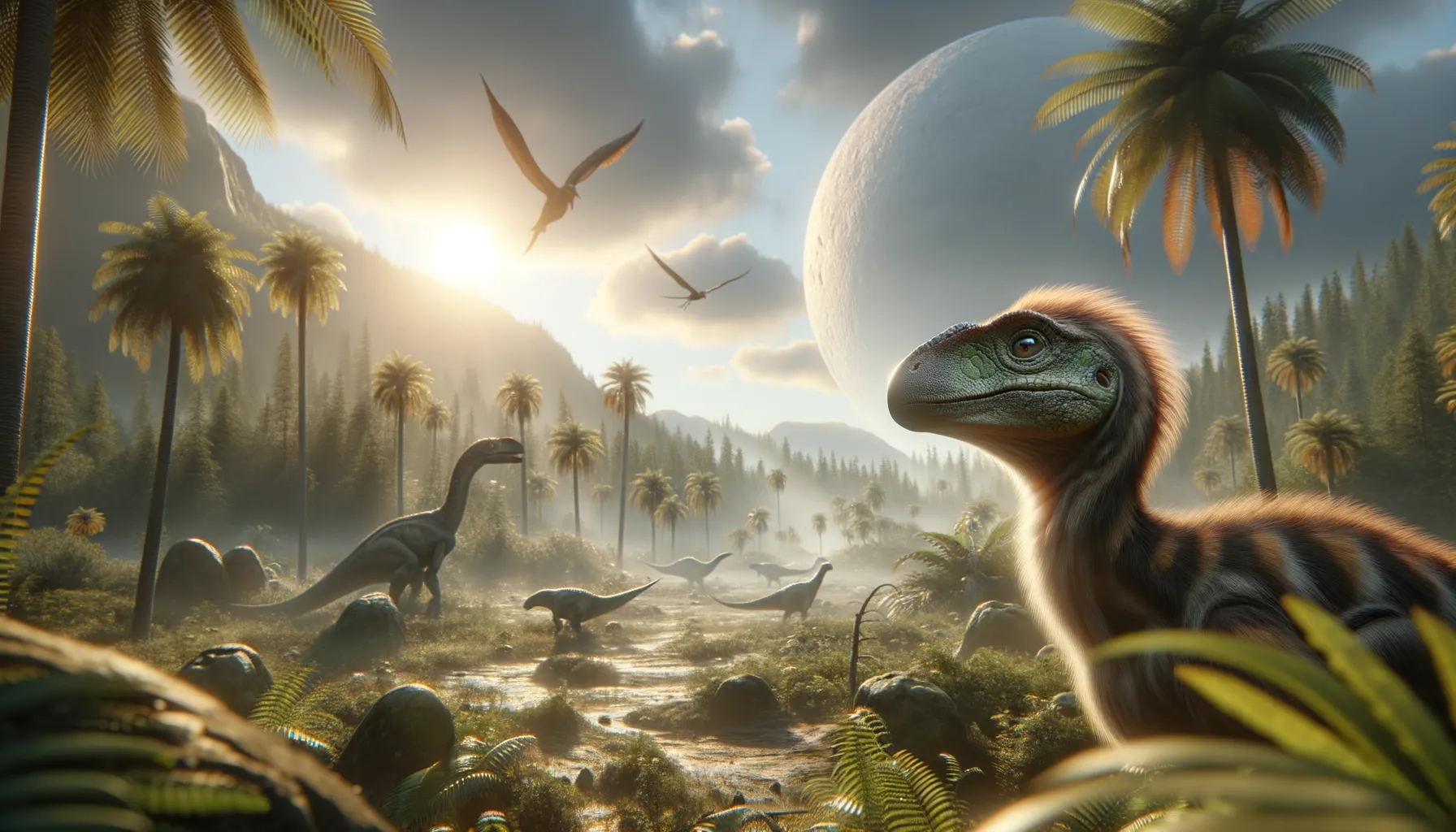
Yulong
Small, swift, a bird-like enigma of the past!
Period
Cretaceous
Length
Around 2 to 3 meters long.
Height
Up to 1 meter tall.
Weight
Approximately 15 to 20 kilograms.
Yulong was a small, bird-like dinosaur notable for its role in illustrating the link between dinosaurs and modern birds. Discovered in China, it lived during the Cretaceous period and was a member of the oviraptorid family. Its physical characteristics were particularly avian, showing advanced stages of evolutionary development toward flight, despite being a non-avian dinosaur. This dinosaur is a prime example of the diversity and specialization found within its group.
Diet
Yulong was an omnivore, feeding on a variety of small animals, plants, and possibly eggs. Its beak-like mouth suggest it may have had a varied diet, allowing it to adapt to different food sources available within its habitat.
Hunting
Yulong was not a predator but would have scavenged and foraged for food. It likely used its agility to navigate through its environment, seeking out small prey or edible plant material.
Environmental challenges
Yulong lived during a time of significant ecological change and competition. Its environment was likely fraught with varying climate conditions and evolving ecosystems. Adaptability in diet and niche exploitation would have been key to survival, as it coexisted with larger predators and competitors.
Speed
Moderate; adapted for agile movement.
Lifespan
Estimated around 10 to 20 years.
First discovery
Found in China in 2009.
Fun Facts
- Yulong was a small dinosaur, similar in size to a modern-day turkey.
- This dinosaur lived during the Late Cretaceous period, about 66 to 72 million years ago.
- Yulong was a type of oviraptorid, a group of feathered dinosaurs known for their bird-like characteristics.
- Fossils of Yulong were discovered in the Qiupa Formation in the Henan Province of China.
- Unlike some larger dinosaurs, Yulong was likely an omnivore, eating a mix of plants and small animals.
- Yulong had a beak-like jaw and two-legged stance, giving it a distinctly avian appearance.
- The name 'Yulong' means 'Henan dragon', referring to its place of discovery.
Growth and Development
Yulong's growth was rapid, similar to modern birds, reaching maturity relatively quickly. Young Yulongs were likely dependent on parental care until they could fend for themselves. This quick development would have helped them survive in a dynamic Cretaceous ecosystem.
Habitat
Yulong inhabited the forested areas of what is now China. These regions provided ample cover and food sources. The environment was diverse, with a mix of open spaces and dense vegetation which supported a wide variety of plant and animal life.
Interaction with other species
Yulong likely shared its habitat with other small dinosaurs, as well as large predators from which it had to evade. It may have engaged in competitive interactions for food resources with other omnivorous species. Social dynamics with its own species are not well-documented but could involve complex interactions similar to modern birds.
Natural lifespan
In the wild, Yulong possibly lived up to two decades.
Reproduction
Yulong reproduced by laying eggs, most likely in well-hidden nests. Parental care was probably significant as is common in many bird species, with adults protecting and nurturing the hatchlings until they were self-sufficient.
Social behaviour
Yulong may have lived in small groups or pairs, a social structure beneficial for protecting young. Such social interactions could help coordinate feeding and protect against predators, akin to how some modern birds operate.
Fossil locations
Fossils of Yulong have been predominantly found in China, providing crucial insights into the development of oviraptorids. These discoveries help flesh out the ecological dynamics of its time and its role in the broader dinosaur lineage.
